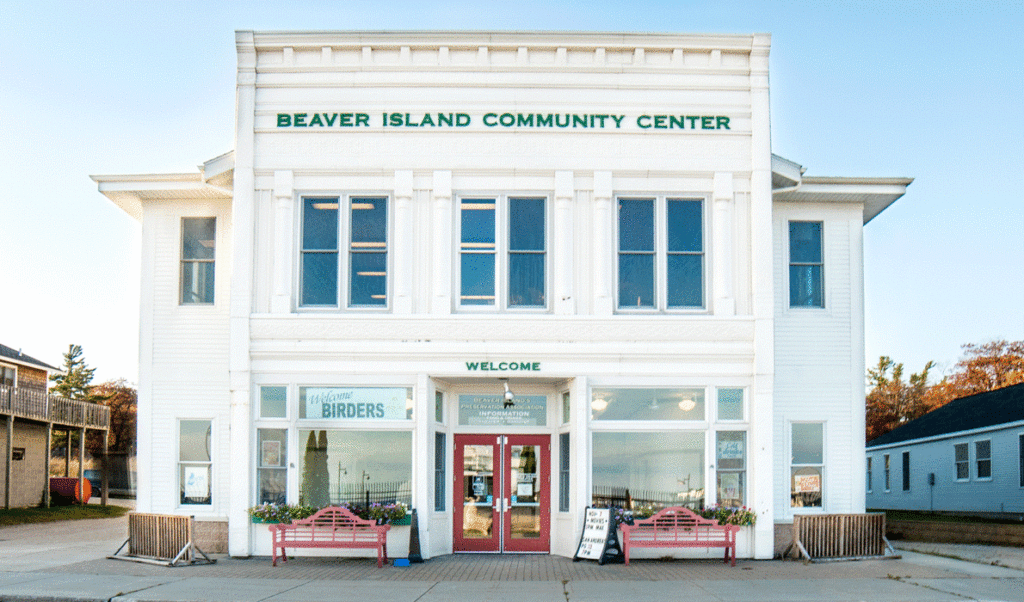Jon W. Allan is director of the Michigan Office of the Great Lakes, an organization the Island Institute, publisher of The Working Waterfront, has partnered with in recent years.
By Jon W. Allan
Many people ask why we focus our work on the Great Lakes islands. “There are so few people there,” they say. Or, they remind us, folks on islands chose to live in isolation, as if that is permission for their communities to be overlooked.
With so many pressing needs, they suggest this island focus may be a bit of a boondoggle, or that we have selected to visit islands—these beautiful and culturally-rich places—in our own self-interest. But mostly, they have just not thought of islands and islanders as a deeply unique set of communities reflecting the past, present, and future of the Great Lakes region.
I respond to the question, “Why islands?” in the simplest way possible: Because they matter.
Island communities are quintessential Great Lakes communities, exhibiting all the complexities of a connected world, but set apart from the mainland in a way that allows them to maintain a deep sense of place, community, and independence.
In our work with island communities, I’ve had the opportunity to understand how islands add markedly to our stories of place and people—to our history. They inform us about rootedness and community. Their people show us where we are from and they struggle, like the rest of us, to create a vision for the future. They tell us equally about self-sufficiency and connectedness, both to each other and to the mainland. Struggles to raise children, access health care, provide affordable housing for working people, pave roads and shovel snow, and to increase internet access match the trials facing other types of rural communities.
Islands represent a microcosm of a larger, dependent, and interconnected world. It is important to listen to these stories of place and of people and reflect on the ways their solutions apply more broadly to all communities.
Out of the nearly 32,000 islands in the Great Lakes, from Lake Superior to the eastern end of Lake Ontario, fewer than 30 hold year-round communities of 50 or more people. There used to be more such places, but many communities succumbed to the forces of change: demographics, modernity, and
economy. Similarly, the coast of Maine once had hundreds of island communities 100 years ago and now holds only 15 such places.
In conversations with islanders, we’ve been reminded that islands are not an imagined set of places in pristine condition; no such place exists in the Great Lakes system. Some may be less affected by human activity than others, but they have all seen the effects of industry, development, and ecosystem change.
Similar stories echo across the Great Lakes of islands that have been in turn fished out, stripped of lumber, farmed, developed, and in some cases, left to their own devices after these resources were exhausted. While islands have historically been places of wealth creation, much of that wealth flowed
off-island, away from the people most affected by the extraction of natural resources.
Despite this history, many families going back generations still call the same islands home.
Mainlanders must dispel the idea of island communities as existing like museums in a glass case. They are living, breathing places, with people pursuing lives and raising children. They are places of remarkable resilience and pluck.
Islanders know their children and schools are essential to their futures, as is a welcoming and kind spirit. They are deeply capable and resilient but also know their communities are vulnerable to external forces.
Our conversations with islanders have taught us that internal strife on a wide range of issues is possible, no different than in mainland communities. But in island communities, when someone is in need, the community rallies to them in a way that few other places do.
The 32,000 Great Lakes islands stretch a linear distance of over 1,000 miles, from Madeline Island in the Apostle Islands Archipelago in Wisconsin, to Wolfe Island at the eastern end of Lake Ontario in Canada, and on
into the beginnings of the St. Lawrence River.
We look to islands to teach us of our history and of hard work and resilience. They are beautiful places with fascinating stories.
Dear islanders: Thank you for your warm welcomes, for opening your communities to us, and for sharing your aspirations, challenges, and conversation.





